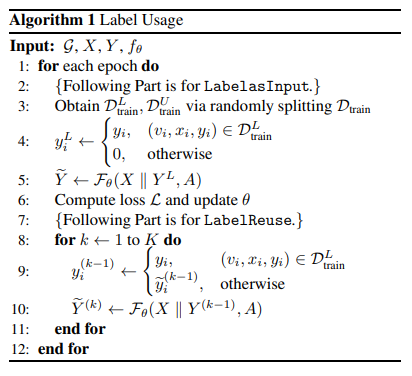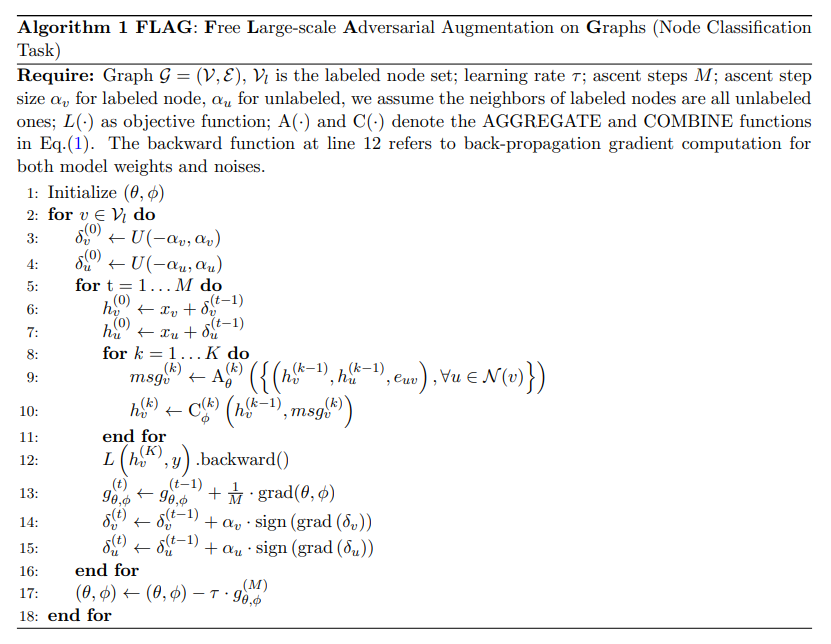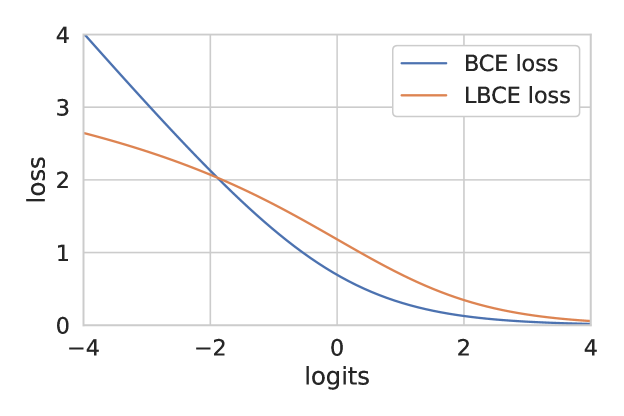-
Label Usage

- Label Input
- Label Reuse
- Similar to label propagation algorithm. In each iteration, assign the output soft labels to the nodes which didn’t have true labels
- Enable the model to update the predicted labels through iterations, but not limited by the homophily assumption
- Optimized Label Reuse
- The reliability of the output soft labels is not guaranteed in the first few epochs, therefore Label Reuse may not be effective in these occasions
- Optimal optimization includes setting threshold, only exploiting the output soft labels at later stages in training, etc.
- Ref_code
-
Label embedding and propagation
-
Virtual Nodes
- Used in graph classification task. Add several virtual nodes ( such as 3 ) to the original training set, and all nodes are connected to these virtual nodes. Their features are the average of the remaining node features.
- Paddle_code
-
Transition matrix normalization for GAT
-
Normalize the transition matrix of GAT
-
-
Correct and Smooth
- Smoothen errors in Correct steps and smoothen labels in Smooth steps
- C&S_code
-
Hop-wise attention (AGDN)
-
Residual term
-
Add residual terms to each layer of the model
-
-
Self Knowledge Distillation
- Firstly train a pretrained teacher model, and then use logits of the teacher model and ground truth labels to train a student model with KD loss and CE loss
- The architecture of the student model is the same as teacher model
- Self-KD-code
-
APPNP-like Propagation (UniMP)
-
Masked label prediction
- In each epoch, randomly mask labels of some nodes in training set and only make use of the label information of the unmasked nodes for training
- This trick can be combined with tricks in Simple Graph Augmentation part
- Paddle_code
-
FLAG


